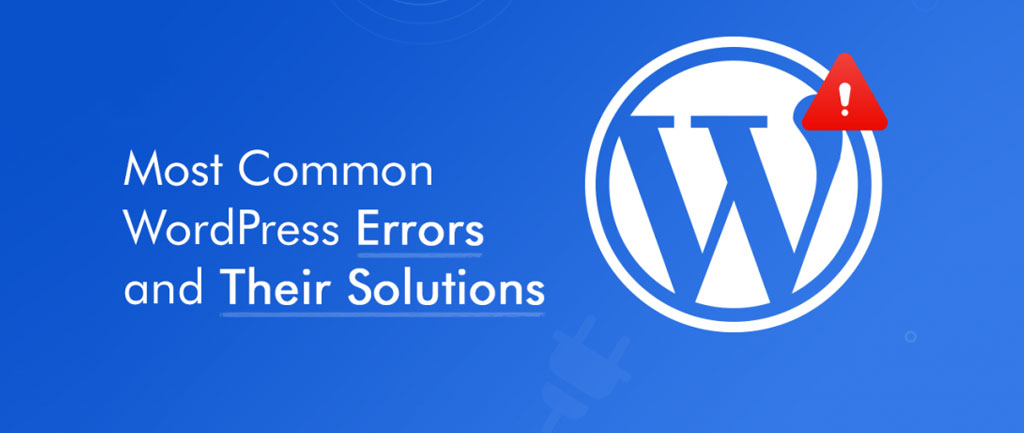
WordPress 6.4, like other versions, may present various errors due to plugin conflicts, theme issues, or server misconfigurations. Here are some of the most common errors users encounter in WordPress 6.4, along with troubleshooting tips and solutions:
1. White Screen of Death (WSOD)
Symptoms: The website shows a blank screen with no content or error message.
Causes: This can be caused by:
- PHP errors (due to a plugin or theme).
- Insufficient PHP memory.
- Fatal PHP errors during theme or plugin execution.
Solutions:
- Enable Debugging: Edit your
wp-config.php file and set WP_DEBUG to true:
Check the wp-content/debug.log file for errors.
- Increase PHP Memory: Add the following to your
wp-config.php:
- Deactivate Plugins/Theme: Try deactivating all plugins and switching to a default theme (like Twenty Twenty-Three). Reactivate plugins one by one to identify the culprit.
- Check Server Logs: Look at your server’s error logs for specific error messages.
2. 500 Internal Server Error
Symptoms: A generic error message, often triggered after an update or server issue.
Causes:
- Corrupt
.htaccess file.
- Plugin or theme conflict.
- PHP memory limit or server configuration issues.
Solutions:
- Reset .htaccess: Rename your
.htaccess file and regenerate it by going to Settings > Permalinks in the WordPress dashboard and saving changes.
- Deactivate Plugins: Temporarily deactivate all plugins to rule out a plugin conflict. You can do this via the
wp-content/plugins folder by renaming the folder.
- Increase PHP Memory: Add the following to
wp-config.php:
3. Error Establishing a Database Connection
Symptoms: WordPress cannot connect to the database, resulting in a connection error page.
Causes:
- Incorrect database credentials in
wp-config.php.
- Database server downtime or overload.
- Corrupted database tables.
Solutions:
- Check Database Credentials: Verify that the database name, username, password, and host in
wp-config.php are correct.
- Repair the Database: Add the following line to
wp-config.php to enable database repair:
Then visit http://yoursite.com/wp-admin/maint/repair.php to repair the database.
- Contact Hosting Provider: If the database is inaccessible, check with your hosting provider to confirm if the database server is up and running.
4. Plugin/Theme Compatibility Issues
Symptoms: After upgrading to WordPress 6.4, plugins or themes may stop working or cause errors.
Causes:
- The plugin or theme is outdated and not compatible with the new version of WordPress.
- PHP code or functions deprecated in newer WordPress versions.
Solutions:
- Update Plugins/Themes: Ensure that all plugins and themes are up to date. Developers regularly release updates to maintain compatibility.
- Disable Plugins: Deactivate all plugins and switch to a default theme (like Twenty Twenty-Three) to check for compatibility issues.
- Check for Deprecation Notices: Review the plugin or theme code for deprecated functions. Refer to the WordPress 6.4 release notes to find any deprecated functions.
5. 403 Forbidden Error
Symptoms: Users cannot access certain pages or the entire site is blocked.
Causes:
- Incorrect file/folder permissions.
- IP restrictions or security plugin issues.
- .htaccess file misconfiguration.
Solutions:
- Check Permissions: Ensure that your files and directories have the correct permissions. Generally, files should be
644 and directories should be 755.
- Check .htaccess: Reset your
.htaccess file as described above.
- Disable Security Plugins: Temporarily disable any security plugins that might be blocking access, especially if they are using IP blocking features.
6. Plugin Update Failed
Symptoms: You can't update a plugin via the WordPress dashboard.
Causes:
- File permissions or ownership issues.
- Corrupt plugin files.
- Connectivity issues to the plugin repository.
Solutions:
- Check Permissions: Ensure that your
wp-content and wp-content/plugins directories have the correct permissions (755 for directories and 644 for files).
- Manual Update: Download the latest plugin version from the WordPress plugin repository and upload it manually via FTP or file manager in your hosting control panel.
- Deactivate & Reactivate Plugin: Sometimes deactivating the plugin and reactivating it can trigger an update.
7. Cache Issues
Symptoms: Changes made on the site don't appear immediately, or outdated content is showing up.
Causes:
- Caching plugins or browser cache.
- Caching at the server or CDN level.
Solutions:
- Clear Caching Plugin Cache: If you're using a caching plugin (like W3 Total Cache, WP Super Cache, etc.), clear the cache from the plugin settings.
- Clear Browser Cache: Try clearing your browser's cache or view the site in an incognito/private browsing window.
- Clear Server Cache: If your host uses server-side caching (like Varnish or Redis), clear the cache from the hosting control panel or contact your hosting provider.
8. Image Uploading Issues
Symptoms: Images fail to upload or show an error message during the upload process.
Causes:
- File permissions issues.
- Exceeding file upload size limit.
- Server configuration issues.
Solutions:
- Check Permissions: Ensure the
wp-content/uploads directory has the correct permissions (755 for directories and 644 for files).
- Increase File Upload Limits: Add the following lines to your
.htaccess or php.ini file to increase the upload limits:
- Check for File Type Restrictions: Make sure the file type you're uploading is allowed by WordPress.
9. Theme Missing Styles (CSS Issues)
Symptoms: The site loads, but without proper styles or formatting.
Causes:
- Theme's CSS file is not loading properly.
- Incorrect paths or missing files after a theme update or migration.
Solutions:
- Check for CSS File Loading: Use your browser's developer tools (right-click > Inspect) to check if the theme's
style.css file is being loaded.
- Re-upload the Theme: Sometimes theme files can get corrupted. Try re-uploading the theme via FTP or the WordPress dashboard.
Most issues in WordPress 6.4 can be resolved by checking plugin and theme compatibility, increasing PHP memory, and reviewing server configurations. Always make backups before making major changes and consider using a staging environment for testing updates and troubleshooting.

